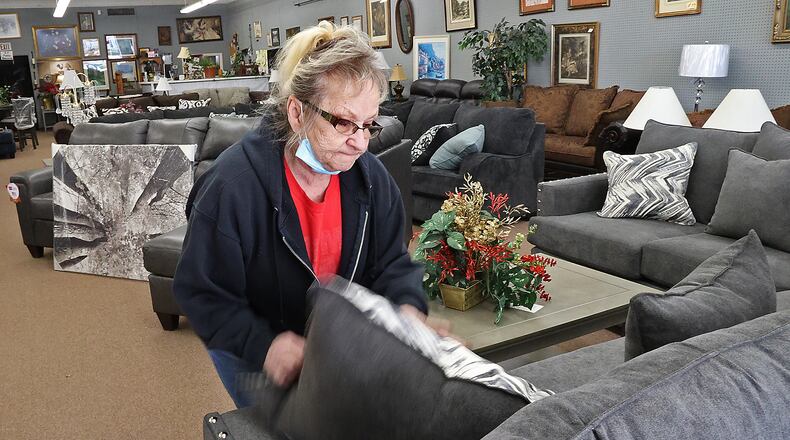“Unfortunately, the furniture industry was not deemed an essential business at the federal or state level, so the retailers as well as most factories shut down,” Counts told the Dayton Daily News. “The industry didn’t really get back to business, even though there was huge demand, until May of 2020.”
When it did reopen, the industry was forced to live off existing supplies and customers turned to online retailers, boosting some companies bottom lines — and stock prices — for a short period of time, Counts said.
Then came labor shortages caused by manufacturers either reducing the amount of staffing to adhere to COVID-19 guidelines in their facilities or shutting down production lines when an outbreak occurred, he said.
“With many parts and products sourced from overseas facilities, many American manufacturers have seen delays of up to 120 days getting much needed supplies to complete production,” said Robert Klaben, vice president of communications for Morris Furniture Co. “A shortage of delivery drivers and shipping containers has also created delays to consumers.”
Morris Home Furniture & Mattress and Ashley HomeStore showrooms are working with their vendor partners to fill customer orders, Klaben said.
“While we try to give our customers an accurate expected arrival date at the time of purchase, circumstances beyond our control have impacted these dates,” he said. “One of our manufacturing partners was forced to close an entire production line last year due to a COVID outbreak, resulting in 35,000 fewer pieces of furniture being produced each week. Others have had to push back delivery due to the non-availability of the fabric on one of our most popular sofas.”
Those shortages are also being felt by smaller furniture stores that have seen an uptick in business but a shortage in inventory.
Credit: Bill Lackey
Credit: Bill Lackey
“The biggest impact is not being able to get our merchandise. I am now starting to get stuff that I ordered (months) ago,” said Sue Call, who owns Sue’s Furniture in Springfield.
Call said it comes at a time when business has been higher than when it was before the pandemic started last year.
Delays of up to five months were common prior to February, Counts said, and supply chains were slowly getting back to normal. Then a winter storm slammed into Texas and Louisiana and shut down several plants in both states that produce chemicals needed for the polyurethane foam essential to upholstered furniture.
With the start-up process the most dangerous part of those plants rebooting, all pipes must be carefully evaluated to ensure there are no leaks, he said.
“They’re just now starting to get back and start it up and ... there’s more than just furniture foam that they’re providing chemicals for,” Counts said. “There’s a huge backlog on plastics and other things that are being impacted.”
In addition the furniture industry is a “very global” one, he said. About 90% of all wooden furniture and 50% of upholstered furniture comes from outside of the United States. Also, a great deal of the components that go into domestic products are imported.
“With the port situation, the container ship situation, lack of containers, all that’s been a huge drag on the industry as well,” Counts said.
A proverbial light does appear to be at the end of the tunnel, Klaben said. Morris Furniture Co. is seeing increases in the number of arriving deliveries from its vendors, he said. It also has added a second shift in its distribution center to expedite delivery of furniture and mattresses once received from its manufacturers.
“Because of the length of time it will take for everyone who wants a vaccine to get a vaccine, we expect the demand for furniture to continue to be at near record levels through the end of 2021,” Klaben said. “If you think you may want new dining furniture for Thanksgiving gatherings, don’t wait until October. We suggest starting your pre-shopping at least 120 days before you want your new furniture in your home.”
For Call and her furniture store in Springfield, though items are slowly coming in, there is still a lot of merchandise she is not able to secure in a timely fashion.
Call has had to turn part of her showroom into storage. She places orders for her store when those items become available because she doesn’t know when she might get the chance to do so again.
Call said there is a high demand for the items that she is able to get from her catalogue, but also has had to turn down some customers due to the shortages.



